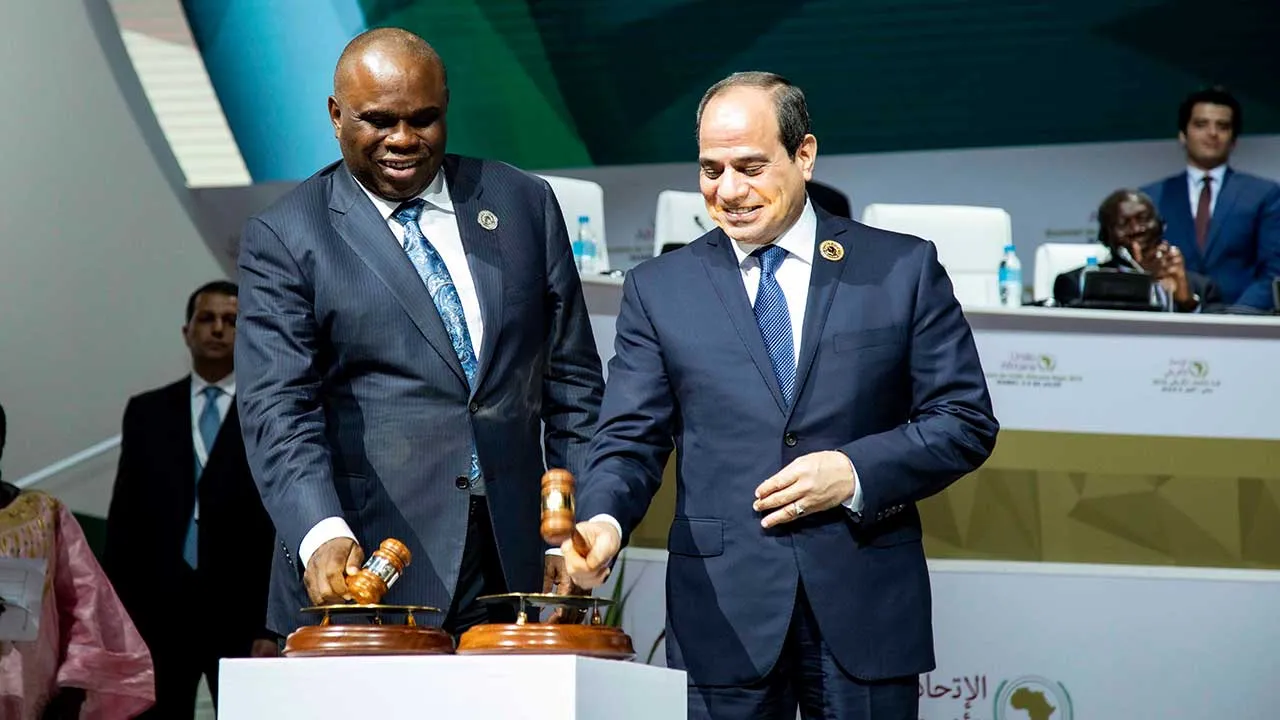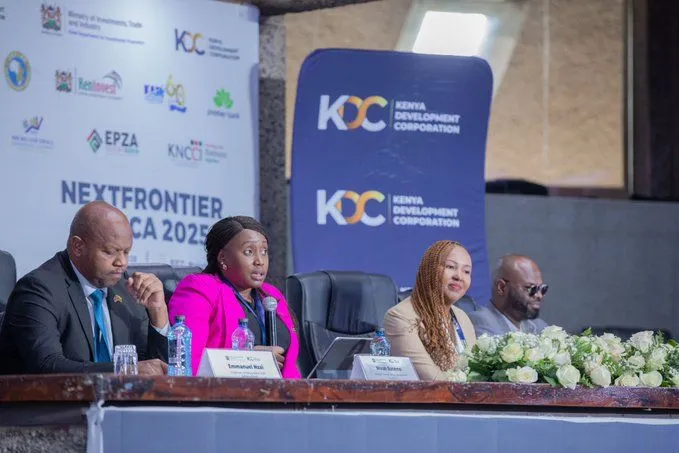On March 10, 2025, the operational phase of the African Continental Free Trade Area (AfCFTA) was officially launched—a landmark moment poised to redefine economic integration across the continent. This pivotal event, which builds on years of diplomatic negotiations and strategic planning, signals the beginning of a new era for African trade. Leaders at the summit, including H.E. Abdel Fattah al-Sissi, President of the Arab Republic of Egypt and Chairperson of the African Union, and Dr. Benedict Okey Oramah, Chairperson of Afreximbank, underscored the importance of this initiative as a catalyst for transforming Africa’s economic landscape.
A Historical Milestone in African Integration
The AfCFTA agreement, adopted and opened for signature on March 21, 2018, in Kigali, entered into force on May 30, 2019. The launch of its operational phase was commemorated at the 12th Extraordinary Summit of the African Union held in Niamey, Niger, on July 7, 2019. During this historic summit, leaders announced a “roll call of honour” that highlighted the 27 countries which had ratified the AfCFTA instruments by that date, while also recognizing the 28 nations that had signed the agreement but were yet to ratify it—with Eritrea being the only member state yet to sign.
A commemorative plaque was unveiled to honor the milestone, and Ghana was selected to host the AfCFTA secretariat—a decision expected to streamline coordination and boost effective implementation of the agreement. The interim responsibilities of the secretariat are being managed by the African Union (AU) Commission until the Ghana-based office becomes fully operational.
Key Instruments Driving the Operational Phase
The operational phase of the AfCFTA is underpinned by five crucial instruments that form the backbone of its framework. Each instrument has been designed to address specific trade-related challenges and ensure the seamless functioning of the free trade area:
1. The Rules of Origin
The Rules of Origin framework is essential to prevent trade deflection and to determine the true source of products and services. This regime governs the conditions under which goods qualify for duty-free access across African markets. By establishing clear criteria for origin, the rules not only protect local industries from unfair competition but also promote the development of regional value chains. This is particularly significant for industries such as agro-processing and manufacturing, where local sourcing and production can boost employment and economic growth.
2. Tariff Concessions
A core pillar of the AfCFTA is the aggressive tariff liberalization policy, which aims for 90 percent tariff reduction across participating countries. With a deadline set for July 1, 2020, the gradual elimination of tariffs—across a transitional period spanning five years—includes provisions for an additional 7 percent tariff reduction on “sensitive products.” This phased approach is designed to give member states time to adjust their economies while ensuring that non-sensitive goods flow freely across borders, thereby stimulating intra-African trade.
3. Online Mechanism for Monitoring and Eliminating Non-Tariff Barriers (NTBs)
Non-tariff barriers have long hampered trade within Africa. These barriers can be physical, such as poor infrastructure, or administrative, such as cumbersome customs procedures. To combat this, the AfCFTA introduces an online mechanism dedicated to monitoring, reporting, and ultimately eliminating NTBs. By leveraging digital technologies, the platform provides real-time data and transparency, facilitating swift action against bottlenecks that impede trade. This tool is expected to enhance competitiveness by reducing delays and lowering the costs associated with cross-border transactions.
4. The Pan-African Payment and Settlement System
Financial transactions across African borders have historically been hindered by currency fluctuations and delays in payment settlements. The Pan-African Payment and Settlement System addresses these challenges by ensuring that payments are processed in local currencies, with net settlements in foreign exchange at the end of each year. This system not only increases the certainty of transactions but also bolsters trust among traders by ensuring timely and complete payments. By integrating modern financial technologies, the payment system is set to play a vital role in reducing the cost of doing business across the continent.
5. The African Trade Observatory
Access to reliable trade data is critical for informed decision-making. The African Trade Observatory serves as a comprehensive trade information portal that aggregates data on opportunities, trade statistics, and detailed profiles of exporters and importers across AU member states. This centralized repository of information will help policymakers, investors, and businesses identify trends, opportunities, and challenges. By promoting data-driven strategies, the observatory aims to enhance transparency and facilitate a more integrated and efficient trade environment.
Significance and Impact of the AfCFTA
The Largest Free Trade Area Since the WTO
With a current population of 1.2 billion that is projected to soar to 2.5 billion by 2050, the AfCFTA has the potential to become the largest free trade area in the world by market size. This monumental scale is expected to have profound implications on global trade dynamics. As tariffs are reduced and barriers eliminated, the free flow of goods, services, and investments will not only boost intra-African trade—which historically has ranged between 15-18%—but also integrate African economies into the global market more deeply.
Stimulating Industrialization and Regional Value Chains
One of the primary objectives of the AfCFTA is to stimulate production across the continent by fostering the development of regional value chains. By facilitating the free movement of raw materials, intermediate goods, and finished products, the agreement aims to empower African manufacturers, especially in sectors such as agro-processing, textiles, and light manufacturing. Strengthening these value chains will help diversify African economies, reduce dependency on imports, and create jobs—thereby accelerating industrialization and economic transformation.
Enhancing Competitiveness and Global Market Access
The AfCFTA is designed to enhance the competitiveness of African companies by providing them with better access to both regional and global markets. As local firms expand their operations across borders without the burden of high tariffs and NTBs, they will be better positioned to compete internationally. This improved competitiveness is expected to lead to increased exports, higher foreign direct investment (FDI), and ultimately, a stronger presence of African products and services on the world stage.
Promoting Economic Diplomacy and Integration
Beyond its economic benefits, the AfCFTA represents a significant step toward deeper political and economic integration in Africa. By bringing together diverse economies under a common trade framework, the agreement is poised to strengthen the continent’s collective bargaining power in international negotiations. Enhanced economic diplomacy will not only lead to better trade deals but will also foster cooperation in areas such as infrastructure development, environmental sustainability, and technology transfer.
Progress Since the Operational Launch
Since its operational launch, the AfCFTA has made notable strides in shaping the trade landscape across Africa. Early indicators suggest that the implementation of its key instruments has started to yield tangible benefits for member states:
Increased Intra-African Trade
Recent trade data indicate a gradual increase in intra-African trade volumes. As tariffs are lowered and NTBs addressed, many African nations have reported a rise in cross-border transactions. Countries that have ratified the AfCFTA instruments are beginning to see the benefits of a more integrated market, with sectors such as agriculture, textiles, and automotive parts experiencing noticeable growth.
Strengthening Institutional Capacities
The establishment of the AfCFTA secretariat in Ghana, along with the interim oversight by the AU Commission, has significantly improved the coordination of trade-related activities. This institutional framework is critical for resolving disputes, harmonizing standards, and ensuring that the operational phase of the agreement runs smoothly. By providing a central point for data collection, monitoring, and policy implementation, the secretariat is playing a pivotal role in building the necessary infrastructure for long-term success.
Digital Platforms and Trade Information
The African Trade Observatory has already begun to serve as an invaluable resource for policymakers, traders, and investors. By offering real-time data and comprehensive trade statistics, the observatory is facilitating more informed decision-making. Moreover, the integration of digital platforms for monitoring NTBs is helping to identify and address trade barriers more effectively, ensuring that the momentum generated by the AfCFTA is sustained.
Enhanced Financial Integration
The launch of the Pan-African Payment and Settlement System is transforming the financial landscape of cross-border trade. By streamlining payment processes and ensuring transactions are settled in local currencies, the system has increased the reliability and efficiency of financial exchanges. This development is expected to build greater confidence among traders and investors, thereby stimulating further economic activity.
Challenges and the Road Ahead
While the operational phase of the AfCFTA marks a significant milestone, the journey toward full economic integration is not without its challenges. Several key issues must be addressed to ensure the agreement achieves its full potential:
Harmonizing Regulatory Frameworks
One of the primary challenges facing the AfCFTA is the harmonization of diverse regulatory frameworks across member states. Differences in trade policies, standards, and customs procedures can create friction that undermines the benefits of free trade. Ongoing efforts to standardize regulations and implement common protocols are essential for reducing these disparities and fostering a more cohesive trading environment.
Addressing Non-Tariff Barriers
Despite progress in tariff liberalization, non-tariff barriers continue to pose significant obstacles to trade. Issues such as inadequate infrastructure, bureaucratic inefficiencies, and inconsistent enforcement of trade rules remain prevalent in many regions. The online monitoring mechanism for NTBs is a promising initiative; however, its success will depend on the commitment of member states to implement reforms and invest in modernizing their trade infrastructures.
Capacity Building and Technical Assistance
For many African countries, especially those with less developed economies, the technical and institutional capacities required to fully leverage the AfCFTA are still evolving. Capacity building initiatives, technical assistance programs, and knowledge-sharing platforms will be crucial in helping these nations overcome implementation challenges. Strengthening the human and institutional capacity across the continent is key to ensuring that all member states can participate effectively in the free trade area.
Balancing National Interests with Regional Goals
The success of the AfCFTA depends on finding a delicate balance between national interests and regional integration goals. While member states stand to gain significantly from increased trade and economic cooperation, there is always a risk that domestic concerns may take precedence over regional commitments. Sustained political will, transparent governance, and a shared vision for collective prosperity are essential for overcoming this challenge.
Looking Forward: A Vision for Africa’s Future
The operational phase of the AfCFTA is more than just a trade agreement—it is a vision for a more integrated, prosperous, and self-reliant Africa. As the continent embarks on this transformative journey, several long-term benefits are anticipated:
Economic Growth and Job Creation
By boosting intra-African trade and stimulating industrialization, the AfCFTA is expected to contribute significantly to economic growth across the continent. The development of regional value chains and the elimination of trade barriers will create new market opportunities, attract investments, and generate jobs. This, in turn, will help reduce poverty and improve living standards for millions of Africans.
Enhanced Competitiveness on the Global Stage
As African companies gain access to a larger, unified market, they will be better positioned to compete internationally. The increased scale of operations and improved efficiencies are likely to enhance the competitiveness of African products and services, paving the way for greater export potential. Over time, this could transform Africa into a major player in global trade, with the AfCFTA serving as a launchpad for economic diplomacy and international collaboration.
Strengthening Continental Unity
Beyond its economic implications, the AfCFTA represents a significant step toward greater continental unity. By fostering closer ties between member states and promoting shared economic interests, the agreement has the potential to strengthen political and social bonds across Africa. This unity is essential for addressing common challenges such as climate change, security threats, and global economic volatility.
A Model for Regional Integration
If successfully implemented, the AfCFTA could serve as a model for regional integration in other parts of the world. Its innovative approach to trade liberalization, digital monitoring, and financial integration offers valuable lessons for emerging economies seeking to emulate its success. The lessons learned from the AfCFTA experience could inform future trade agreements and help drive a more inclusive and sustainable model of globalization.
Conclusion: The Dawn of a New Era in African Trade
The launch of the operational phase of the African Continental Free Trade Area marks a historic turning point for the continent. With a robust framework that includes the Rules of Origin, tariff concessions, an online mechanism for eliminating non-tariff barriers, a cutting-edge payment and settlement system, and a comprehensive trade information portal, the AfCFTA is set to transform the way Africa trades internally and engages with the world.
This ambitious initiative, now in its operational phase, has already begun to yield early benefits—from increased trade volumes and improved financial transactions to enhanced regulatory cooperation and capacity building. However, the road ahead will require unwavering commitment from all stakeholders, including governments, private sector players, and regional institutions. Harmonizing regulations, addressing non-tariff barriers, and investing in capacity building remain critical challenges that must be overcome to fully realize the promise of the AfCFTA.
As Africa continues its journey toward economic integration, the operational phase of the AfCFTA offers a beacon of hope—a vision of a continent where trade flows freely, industries thrive, and the collective potential of its people is unleashed. With the secretariat in Ghana set to become the nerve center for this transformative process, and with the sustained support of organizations like the African Union and Afreximbank, the future of African trade looks brighter than ever.
In the coming years, as the benefits of the AfCFTA materialize in the form of increased economic growth, job creation, and enhanced competitiveness on the global stage, the agreement will undoubtedly leave an indelible mark on the continent’s development trajectory. The operational phase of the AfCFTA is not merely an economic initiative—it is a testament to Africa’s resilience, ambition, and determination to forge a united and prosperous future.
As the continent steps confidently into this new era, the world watches with anticipation. The success of the AfCFTA will not only redefine the African trading landscape but will also serve as a powerful example of regional integration done right—one that could inspire similar efforts around the globe.
Ready to take your career to the next level? Join our dynamic courses: ACCA, HESI A2, ATI TEAS 7 , HESI EXIT , NCLEX – RN and NCLEX – PN, Financial Literacy!🌟 Dive into a world of opportunities and empower yourself for success. Explore more at Serrari Ed and start your exciting journey today! ✨
photo source: Google
By: Montel Kamau
Serrari Financial Analyst
10th March, 2025
Article, Financial and News Disclaimer
The Value of a Financial Advisor
While this article offers valuable insights, it is essential to recognize that personal finance can be highly complex and unique to each individual. A financial advisor provides professional expertise and personalized guidance to help you make well-informed decisions tailored to your specific circumstances and goals.
Beyond offering knowledge, a financial advisor serves as a trusted partner to help you stay disciplined, avoid common pitfalls, and remain focused on your long-term objectives. Their perspective and experience can complement your own efforts, enhancing your financial well-being and ensuring a more confident approach to managing your finances.
Disclaimer: This article is for informational purposes only and does not constitute financial advice. Readers are encouraged to consult a licensed financial advisor to obtain guidance specific to their financial situation.
Article and News Disclaimer
The information provided on www.serrarigroup.com is for general informational purposes only. While we strive to keep the information up to date and accurate, we make no representations or warranties of any kind, express or implied, about the completeness, accuracy, reliability, suitability, or availability with respect to the website or the information, products, services, or related graphics contained on the website for any purpose. Any reliance you place on such information is therefore strictly at your own risk.
www.serrarigroup.com is not responsible for any errors or omissions, or for the results obtained from the use of this information. All information on the website is provided on an as-is basis, with no guarantee of completeness, accuracy, timeliness, or of the results obtained from the use of this information, and without warranty of any kind, express or implied, including but not limited to warranties of performance, merchantability, and fitness for a particular purpose.
In no event will www.serrarigroup.com be liable to you or anyone else for any decision made or action taken in reliance on the information provided on the website or for any consequential, special, or similar damages, even if advised of the possibility of such damages.
The articles, news, and information presented on www.serrarigroup.com reflect the opinions of the respective authors and contributors and do not necessarily represent the views of the website or its management. Any views or opinions expressed are solely those of the individual authors and do not represent the website's views or opinions as a whole.
The content on www.serrarigroup.com may include links to external websites, which are provided for convenience and informational purposes only. We have no control over the nature, content, and availability of those sites. The inclusion of any links does not necessarily imply a recommendation or endorsement of the views expressed within them.
Every effort is made to keep the website up and running smoothly. However, www.serrarigroup.com takes no responsibility for, and will not be liable for, the website being temporarily unavailable due to technical issues beyond our control.
Please note that laws, regulations, and information can change rapidly, and we advise you to conduct further research and seek professional advice when necessary.
By using www.serrarigroup.com, you agree to this disclaimer and its terms. If you do not agree with this disclaimer, please do not use the website.
www.serrarigroup.com, reserves the right to update, modify, or remove any part of this disclaimer without prior notice. It is your responsibility to review this disclaimer periodically for changes.
Serrari Group 2025





